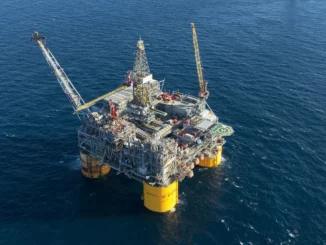
Louisiana should gain back 3,500 upstream oil and gas jobs by mid-2023, but natural gas prices along the Gulf Coast could remain elevated as long as demand for U.S. liquefied natural gas stays high, according to an LSU report released Wednesday.
The state lost 8,700 jobs in the upstream oil and gas sector when demand for fossil fuels fell because of COVID-19, according to the 2023 Gulf Coast Energy Outlook from LSU’s Center for Energy Studies. Louisiana has regained about 2,500 of those jobs as pandemic pressures have eased and demand returned.
Texas, meanwhile, lost 83,000 jobs in that sector but should gain 12,200 upstream jobs by the second quarter of 2023.
“It is important to note that although employment is expected to increase over the forecast horizon, these model results are not anticipating employment in either state to reach pre-COVID levels over the forecast horizon,” the report said.
Crude oil prices, which have hovered around the $80 to $90 per barrel range over the last month, should stay closer to $80 per barrel in 2023 as futures prices continue to fall, according to the report.
Meanwhile, natural gas prices could fall from $5.50 per million British thermal units in 2023 to $4.70 in 2024. The natural gas forecast for 2024 is about $1.40 per MMBtu higher than originally projected, before Russia’s invasion of Ukraine.
After the war started, prices shot up from $90 to $120 per barrel for crude oil and from $6 to $9 per MMBtu for natural gas before leveling off.
Gulf Coast crude oil production for 2022 should end up around 9 million barrels per day, an increase from 7.7 million in 2020 and 7.8 million in 2021. By 2032, Gulf Coast oil production is forecasted to reach 11.7 million barrels per day, boosted in part by higher crude prices.
For natural gas, Gulf Coast production should land somewhere around 53 billion cubic feet per day for 2022, up from 44.4 billion in 2020 and 46.5 billion in 2021. By 2032, it should reach above 68 billion cubic feet per day.
“As with prior years, there is plenty of oil in the ground to sustain a decade of production growth,” the report said.
Global energy demand should lead to an increase in U.S. exports of crude oil and natural gas, particularly LNG, which the report said represents a continued “growth opportunity” for the Gulf Coast.
Driven by demand in Europe and Asia, the Gulf Coast is preparing for $116 billion in LNG investments, most of which is set for Louisiana. Greater European demand led to a flurry of new LNG contract announcements earlier this year.
“Without this international demand growth alongside the growth of domestic oil and gas production due to the advent of shale production, the industrial expansion we have seen in the Gulf Coast region would not have been possible,” the report said.
However, energy demand could be hindered by a recession induced by rising interest rates to combat inflation.
Price increases for all energy commodities have been a significant driver of inflation this year. The LSU report noted the energy component of the Consumer Price Index jumped by 24% over the year from August 2021.
Driven by demand in Europe and Asia, the Gulf Coast is preparing for $116 billion in LNG investments, most of which is set for Louisiana. Greater European demand led to a flurry of new LNG contract announcements earlier this year.
“Without this international demand growth alongside the growth of domestic oil and gas production due to the advent of shale production, the industrial expansion we have seen in the Gulf Coast region would not have been possible,” the report said.
However, energy demand could be hindered by a recession induced by rising interest rates to combat inflation.
Price increases for all energy commodities have been a significant driver of inflation this year. The LSU report noted the energy component of the Consumer Price Index jumped by 24% over the year from August 2021.
About $175 billion worth of new energy investments has been lined up for the Gulf Coast through 2030, $121 billion of which has been steered toward Louisiana. Roughly $29 billion of the total includes “energy transition” investments, including LNG, which heavy industry considers a “transition” fuel.
Further investments could be on the horizon with $386 billion set aside in the Inflation Reduction Act for energy-related projects such as renewable energy, carbon capture, electric vehicle infrastructure and more.
“Industrial decarbonization can also lead to competitive advantages for Gulf Coast industries, particularly if trade policies and global tariffs become tied to environmental attributes,” the report said.
Much of Louisiana’s push toward net zero emissions relies on carbon capture, the controversial technology that aims to capture industrial carbon dioxide emissions and bury them deep underground. Uncertainty surrounding carbon capture has led to pushback from Louisiana residents, including Livingston and St. Helena parishes.
David Dismukes, executive director of LSU’s Center for Energy Studies, said carbon capture has to be implemented for Louisiana to meet its emissions, and it needs to start “moving pretty fast.”
“If this is going to take off, it’s going to take a lot of education” to ease fears, Dismukes said, saying LSU and state government should lead those efforts.



